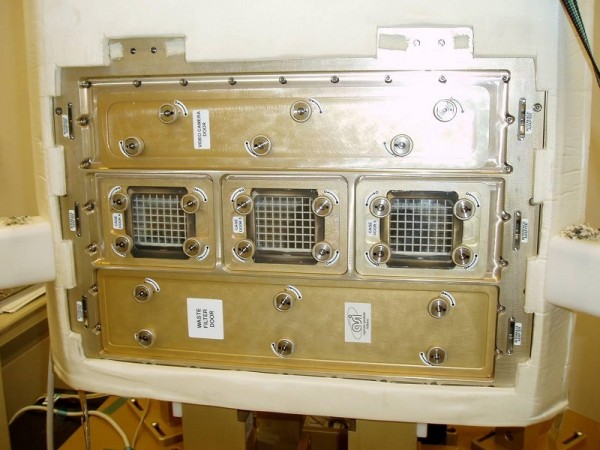By Ana Verayo, | April 21, 2016

Side view: facility includes cages that will house six individual mice.
Mice that spent two weeks in space apparently now revealed early signs of liver damage, upon their return to Earth which now raises concern about long term spaceflight effects on humans, especially to Mars.
These new findings present a crucial interest for NASA, as the agency is planning to send humans to Mars and other deep space missions such as asteroids beginning 2030, requiring longer stays in space of more than two years in transit.
Like Us on Facebook
NASA is also studying these dangerous effects of long term spaceflight on the human body, where US astronaut Scott Kelly recently spent 340 days aboard the International Space Station in lower Earth orbit.
According to lead author of the study, Karen Jonscher, who is also a profesor at University of Colorado's Anschutz Medical Campus, before this study, there wasn't any information regarding the impact of spaceflight on the liver, adding that astronauts often return to Earth with symptoms similar to diabetes but were resolved quickly.
These lab mice however, spent only 13 and a half days aboard NASA's space shuttle, Atlantis back in 2011. When the mice returned home, researchers discovered that spaceflight appear to cause certain cells to produce more scarring and long term damage to the organs.
More specifically, the mice revealed that they have increased their fat storage in their livers, and losing a lot of retinol which is a form of Vitamin A found in animals. The creatures also showed significant changes in their ability to break down fats, where they showed signs of fatty liver disease of non alcoholic origins, including potential early indications of the first stages of fibrosis, which can be considered as a more progressive consequence of NAFLD (non alcoholic fatty liver disease).
Scientists are already aware that spaceflight can cause bone and muscle mass loss including changes in vision and even brain functions in humans.
Jonscher adds that these signs of liver damage observed in mice can take months to years to develop by eating an unhealthy diet. She asks, if a mouse is showing nascent signs of fibrosis without changing its diet for 13.5 days, then what could be happening in humans?
A possible cause for this serious health problem is that these mice probably suffered under a tremendous amount of stress during the space launch and flight, adding powerful forces, extreme noise and intense shaking upon departing and re-entering the planet's atmosphere.
More studies on mice tissues that were flown to the International Space Station that stayed there for months can provide more information about how microgravity can play an important role in liver damage.
This new study is published in the journal PLOS ONE.
-
Use of Coronavirus Pandemic Drones Raises Privacy Concerns: Drones Spread Fear, Local Officials Say

-
Coronavirus Hampers The Delivery Of Lockheed Martin F-35 Stealth Fighters For 2020

-
Instagram Speeds Up Plans to Add Account Memorialization Feature Due to COVID-19 Deaths

-
NASA: Perseverance Plans to Bring 'Mars Rock' to Earth in 2031

-
600 Dead And 3,000 In The Hospital as Iranians Believed Drinking High-Concentrations of Alcohol Can Cure The Coronavirus

-
600 Dead And 3,000 In The Hospital as Iranians Believed Drinking High-Concentrations of Alcohol Can Cure The Coronavirus

-
COVID-19: Doctors, Nurses Use Virtual Reality to Learn New Skills in Treating Coronavirus Patients







